The Real First Irish Woman with a Doctorate in Maths? (Jan 2020)
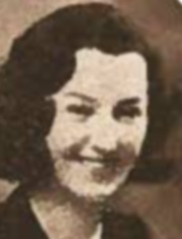
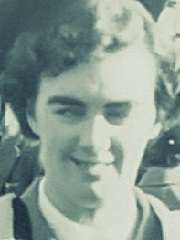
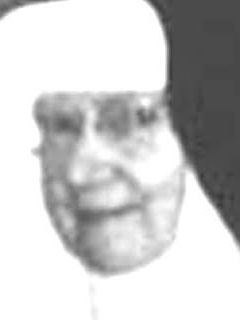
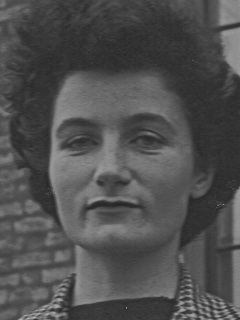

Who was the real first Irish woman to earn a university degree in mathematics? Or the first to earn a postgraduate degree, or write a thesis? To teach at the third level? To have a permanent academic job? To supervise a postgraduate thesis? Or to write a maths book?
These are complex, challenging questions, and the corresponding queries for men are not easy to answer definitively either. Even harder to document would be the first Irish women (or man) first to make a significant mathematical discovery or prove a theorem, or to publish a paper in a research journal.
Despite five years of data gathering and sharing at AIMM (the Annals of Irish Mathematics and Mathematician), addressing such questions with confidence is fraught with uncertainty. In future blogs we will attempt some answers in the case of women, where the data set is much smaller, though sometimes obscured by the cobwebs of neglect.
The identity of "the first Irish women with a mathematical doctorate" seems less contentious, though it too is open to some discussion. But, as we'll see shortly, the issues need re-evaluation in the light of previously overlooked information. In matters historical, “first” is a risky word to bandy about. It's safer to err on the side of caution, and generally only claim “first known”.
The Irish Question
What does it means to be an Irish mathematician, regardless of gender? Let’s assume the issue is not what constitutes a mathematician per se—acknowledging that we cast the net wide and generally include mathematical physicists, applied mathematicians, statisticians and more—and put the focus on the Irish Question, as it were.
To qualify as Irish, one might expect to have been born and/or bred somewhere on the island of Ireland. Or, perhaps, one or both of one’s parents might be Irish (would that lead to a circular definition?) In many cases (Hamilton, Salmon, Casey, Synge, Laffey) all of these conditions hold, but in other instances we settle for less.
We certainly don’t object if the person spent their professional life oversees, as did d’Arcy, Adrain, Byrne, Stokes, and many others, in some cases having also obtained their mathematical training outside Ireland. Before the mid 19th century, third level educational opportunities in mathematics in Ireland (and indeed many parts of the world) were limited. We are quick to claim William Thomson (aka Kelvin) who only spent his early years in Ireland, and Henry Smith and Bill McCrea, who left the island as infants.
Perhaps, a career (whole or in part) in Ireland is enough. We’ve been known to brag of Boole’s 16 years at Queen’s College, Cork, Schrödinger’s 17 years at the DIAS, and Gosset’s 35 years working for Guinness in Dublin.
There are other more tenuous connections. Alan Turing’s mother Ethel Stoney was Irish—she married Julius Turing in 1907 on Clyde Rd in Dublin—and some say the revolutionary English intellectual inherited his brains from her side of the family. Which influences one’s ability and development more, genetics or the environment and culture one grows up in? We don’t pretend to know, but surely it's worth noting heritage as well as upbringing and education.
Then there is the reality that pre-1900, the majority of Irish women who gained access to higher lever education of any sort came from Anglo-Irish stock. Often their fathers were academics, or clergymen with TCD or Oxbridge backgrounds.
It’s worth keeping all the above factors in mind when we consider Irish women mathematicians from the period when women rarely got a foot in the door of the profession.
"The First Irish Women with a Doctorate in Maths" Revisited
Three years ago here, in the blog “The First Irish Woman with a Doctorate in Maths", we highlighted the careers of numerous Irish women who were early high achievers in mathematics. We concluded by asking readers to vote in a poll as to who in their opinion deserved to be remembered as the first Irish women with a doctorate in mathematics. Of the ten women discussed there, some had doctorates in fields other than maths. There were six "main contenders" offered in the poll, whose doctorates were awarded in the period 1941-1973, as well as the option “Other (please specify)”. Only 16 people chose to participate. Here are the results:
6 voted for Siobhan O’Shea (married name Vernon, born and reared in Macroom, Cork), who in 1964 received her PhD from UCC for a thesis consisting of previously published papers in analysis.
4 voted for Sheila Power (married name Tinney, born and reared in Galway city), who in 1941 received her PhD from the University of Edinburgh for a thesis in mathematical physics.
3 voted for Barbara Yates (born in Dublin, reared in Belfast) who in 1953 received her PhD from the University of Aberdeen for a thesis on difference equations.
2 voted for Muriel Wales (born Muriel Kennett in Belfast, reared in British Columbia, Canada) who in 1941 received her PhD at Toronto for a thesis in algebra.
1 voted for Other (without specifying who).
It turns out that the last, lone (and vague) voter was the wisest. Just like in real life, the electorate has been known to back the wrong horse.
As already remarked above, one should never say “first” when speaking of certain historical claims, only “first known”. For many years, Evelyn Boyd Granville (born 1924) was recorded as being the first African American woman with a doctorate in mathematics (1949, from Yale under Einar Hille). But in time the record was corrected, and Euphemia Lofton Haynes (1890-1980) is now believed to be the person deserving of that title, for her 1943 PhD from Catholic University under Aubrey Landry.
And so it is with Irish women: and there is no longer any need to worry about pure maths versus maths physics, or in what month in 1941 Sheila Power or Muriel Wales submitted their theses or graduated (in Edinburgh and Toronto, respectively). Or to ask whether Wales qualifies as Irish, as she grew up from infancy in Canada.
The clock has now been pushed back a full decade to 1931. The location is Washington, DC, and Catholic University gets the credit once more.
The new “first known Irish woman with a mathematical doctorate” has been hiding in plain sight, both on Wikipedia (since January 2017) and earlier in the 2008 book Pioneering Women in American Mathematics: The Pre-1940 PhD’s (AMS) by Judy Green and Jeanne Laduke. The latter wonderful resource is available in updated form online. (Click on Supplementary Material there.)
There, on page 209, one finds Mary de Lellis Gough (née Margaret Gough, 1892-1983), who was born 15 February in Rickardstown, Kilmore, Wexford, to Ellen Dunne and Walter Gough. Her family pronounces Gough as Goff. She appears as Maggie in the 1901 census, where her father's occupation is listed as Labourer, and she emigrated to the USA in September 1909, having completed her schooling under nuns at St John of God, in Wexford town. In Texas she joined the Sisters of Charity, and soon changed her name, as recounted in the New Ross Standard in August 1910 (right before a short note about Booker T. Washington).
Soon she started a career of teaching at Incarnate Word College in San Antonio, in between accumulating maths degrees while on leave at Catholic University, in Washington, DC. There she earned her BA in 1920 and her MA (for a thesis on “The Representability of a Number by an Indefinite Binary Quadratic Form”) in 1923. It’s her PhD that makes her the earliest known (as of early 2020) Irish born and educated woman to get a doctorate in maths.

The title page of the earliest known doctorate in mathematics by an Irish woman
(courtesy of Judy Green)
Her 26-page thesis “On the Condition for the Existence of Triangles In-and-Circumscribed to Certain Types of Rational Quartic Curve and Having a Common Side” was awarded in 1931, a full decade before Muriel Wales or Sheila Power got their doctorates.
Her research (like that of Haynes above) was done under Aubrey Landry, who supervised several women’s doctorates, as did his own advisor Frank Morley at Johns Hopkins.
Sister Mary Gough was a member of the AMS, e.g., she is listed alphabetically under "Mary" in 1931, and geographically later in the decade. In the 1940s she left teaching due to health issues, and then worked for two decades as an accountant in Forth Worth. She died in 1983, aged 91.
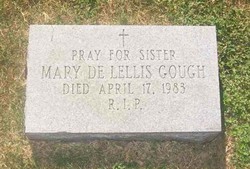
A hidden figure from Irish mathematics
Until September 2022, no photograph of her had come to light, all we had was the image of her grave depicted above. Thanks to the dogged determination of Mary Cunneen of UCD, the photo below was then discovered in the files of the Sisters of the Incarnate Word in Texas. For more on her story, see this RTE Brainstorm article from October 2022. A competition in her honour was announced in 2023.
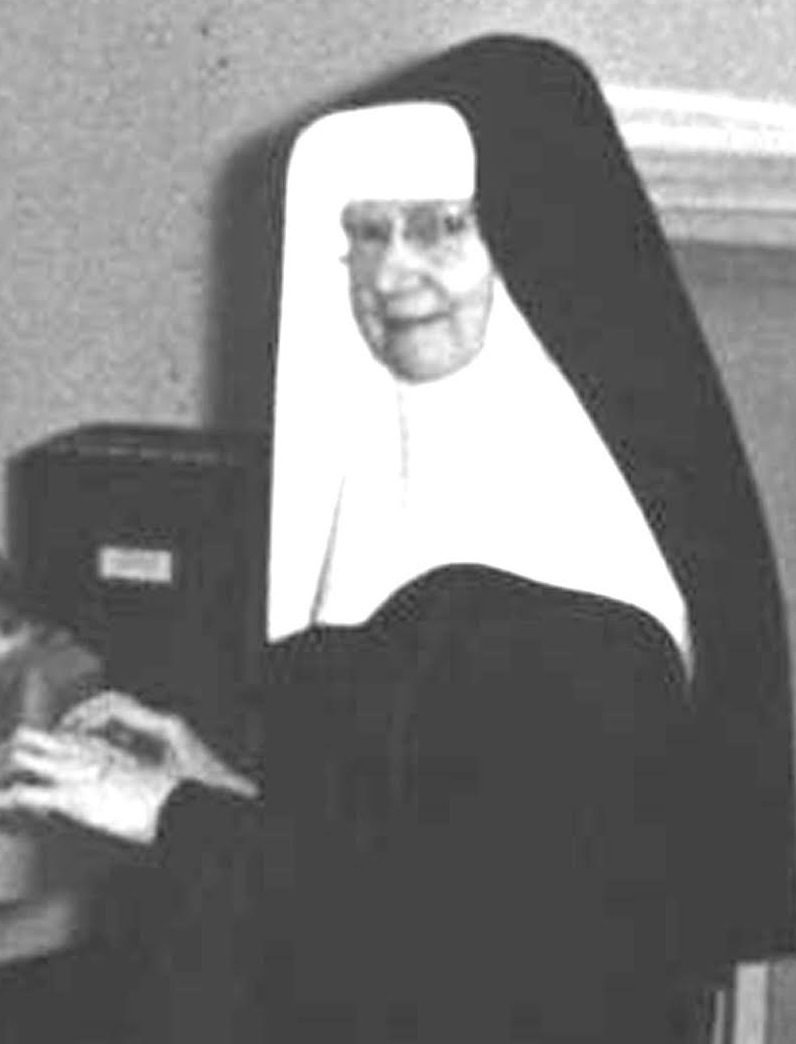
The only known photograph of Margaret Gough aka Sister Mary de Lellis (courtesy of the Sisters of the Incarnate Word in San Antonio, Texas)
Sister Mary corresponded with relatives in Wexford over the seventy-four years she lived in the USA, though she never returned to her native land. Her mother and father died in 1920 and 1937, respectively. Her sister Lizzie married local man James Moore and remained in Kilmore, they died in the 1940s and 1950s, respectively.
In appears that a little corner of Irish STEM history has been rewritten. To the best of our knowledge, Sheila Power/Tinney is still the first Irish woman with a doctorate in mathematical physics.
The five faces shown at the head of this page are in the order Wales, O'Shea, Gough, Power, Yates (remember WOGPY as you scroll back up).
Thanks to Olivia Bree (SPD) and Judy Green (Marymount University) for valuable contributions to this article in January 2020.
Updated September and October 2022 with new input from Mary Cunneen of UCD and Gough family members in Wexford.